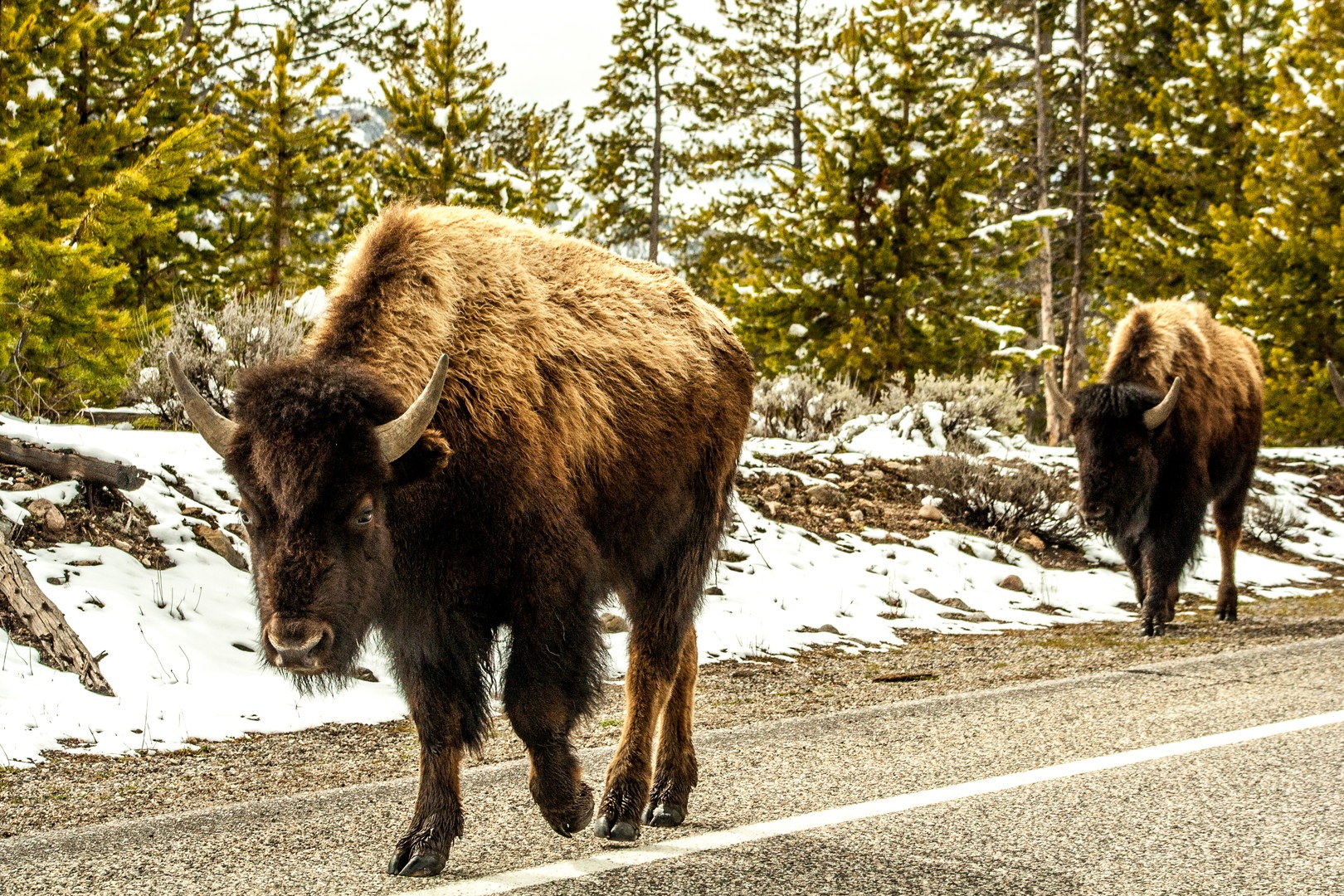You are here
Yellowstone National Park has long been known for its wildlife — its famed bison is the symbol of our National Park System. In fact, it could be argued that Yellowstone is the best area for wildlife viewing in the Lower 48. Bison, elk, bighorn sheep, wolves, moose and even grizzly bears call Yellowstone home. While there is no guarantee to see wildlife, most come away with some of the closest encounters with wild animals they've ever had, all from the safety of their car.
Although most all of the park is located within Wyoming, the entrance to West Yellowstone is actually located in Montana, along with a few square miles of the park. This area is filled with herds of bison, and on most days you'll be lucky enough to see them walking right on the road, even coming within a few feet of cars. They are docile creatures and mind their own business as long as they are not bothered. If you come across one on the road, come to a stop and allow them to pass. Take pictures and enjoy the moment, but do not disturb or provoke them, or they will become dangerous. Left alone, they will pay no attention to you.
Elk also roam this first part of the park, especially in the open fields around springtime. The snowmelt reveals the grass for the first time in months, and they go on a grazing spree for a few weeks. During this time, it's hard to drive through and not see dozens of them lining both sides of the road.
Bears, moose and wolves are always harder to spot, and they can be both exhilarating and terrifying when you do. If you do happen to see either, drive to the next pull-off that is a safe distance (100 yards or more), and observe from there. Do not leave your vehicle, drive directly toward any wildlife, or make any loud noises to draw attention to yourself. Like the bison, most bears, moose and wolves will pay no attention to you if they are left alone. However, there are stories of people getting killed by wildlife in Yellowstone because they didn't follow simple guidelines laid out by park rangers.
Getting a glimpse of some of these animals in our nation's first national park is a special thing that all should experience, and it involves very little risk when you follow simple guidelines. However, always be cautious and aware of any special circumstances, such as migration and grazing seasons. Ask a ranger where to go to see specific wildlife and areas to avoid for any reason. Rangers are very helpful with making your trip to the park the best and safest it can be. Drive slow and attentively, as wildlife crossings are frequent on all roads in the park. Most of all, have fun and cherish any encounter you have with the incredible wildlife in Yellowstone.
Logistics + Planning
Current Weather: Powered by Dark Sky






























Comments
Sign In and share them.